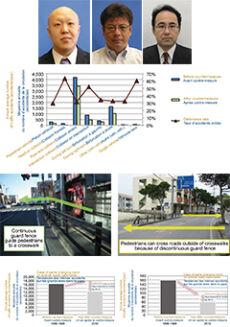Publications Routes/Roads Road safety
This page lists Routes/Roads articles of PIARC in the field of road safety. These publications are classified chronologically.
-
Malaysia - Mixed traffic and segregation of motorcycles on the Port Klang-Kuala Lumpur Road

Recent economic growth in Malaysia has resulted in a significant increase in the volume of road traffic in most cities in the country. In spite of being able to travel quite quickly within a city, many Malaysians have opted for motorcycles as their means of transportation to avoid traffic congestion. Approximately 47% of registered vehicles in Malaysia are motorcycles, compared to most developed countries where the proportion of motorcycles is only about 1-5%.
-
Road safety framework and policies in Singapore

Singapore is an urbanised city State. It has a land area of 715.8 square kilometers and a dense population of about 5.31 million. About 13% of the total land area is devoted to roads. The road network is highly urbanised, with 161 km of expressways, 652 km of arterial roads, 561 km of collector roads and 2,051 km of local access roads. The road infrastructure is well developed and well maintained, including the provision of lighting on every public road. Compared with many developed countries, [...]
-
Traffic safety countermeasure project for arterial roads in Japan

A hazardous locations countermeasure project has been conducted in Japan since 2003 as part of a traffic safety countermeasure project for arterial roads. The aim of the project is to implement effective and efficient countermeasures at hazardous locations, which are determined by their concentration of traffic accidents. A goal of a 30% reduction in fatal and injury accidents has been set.
-
Philippine initiatives towards safer roads: a'safe system' approach

On 10 May 2010, the UN General Assembly proclaimed the period 2011-2020 as the Decade of Action for Road Safety. Its goal is to stabilize and reduce the forecast level of global road fatalities by 2020 through increased activities conducted at national, regional and global levels.
-
Progress in Indonesia on infrastructure improvement

In Indonesia the number of road fatalities continues to increase. According to the Indonesian Traffic Corporation, the number of fatalities in 2012 peaked at 31,234. The cost associated with traffic accidents in 2010, in terms of lost productivity, was about 3% of national GDP, or about IDR 210 trillion. This figure includes infrastructure damage, medical expenses, and loss of income.